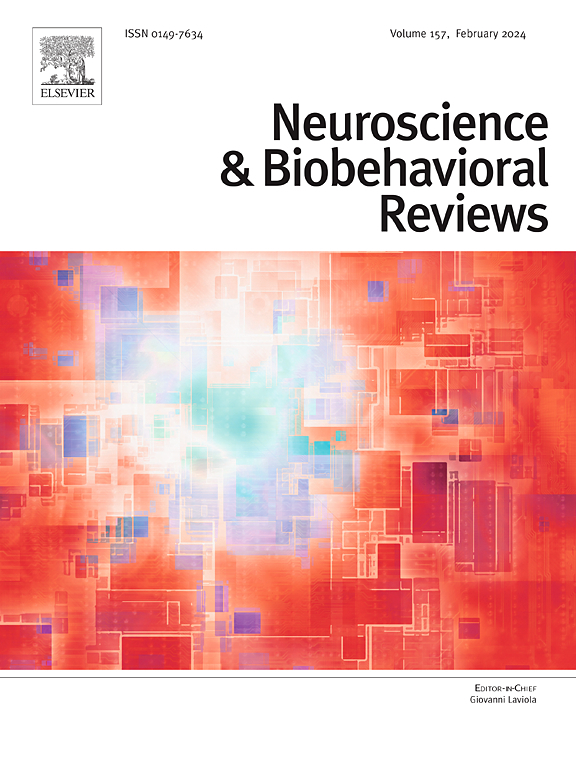Imaging markers of neuroinflammation in aging and Alzheimer's disease and related dementia: A comprehensive review
IF 7.5
1区 医学
Q1 BEHAVIORAL SCIENCES
引用次数: 0
Abstract
Neuroinflammation represents a key pathophysiological process contributing to cognitive decline during aging and may play a significant role in the development of Alzheimer’s disease and related dementia (ADRD). Many magnetic resonance imaging (MRI) studies have investigated the extent and impact of neuroinflammation in older adults and in individuals at various stages of ADRD. These imaging techniques enable the assessment of blood-brain barrier (BBB) permeability, structural damage in white and gray matter, and functional brain impairment. In this review, we summarize the advantages and limitations of various MRI protocols used to study neuroinflammation. With a focus on neuroinflammation, studies that characterized structural and functional brain changes but did not relate the findings to neuroinflammation were outside the scope of this review. However, we provided a brief survey on studies combining multiple imaging modalities for readers to have a broader view on neuroinflammation, aging, and ADRD. We first begin by introducing MRI techniques used to examine BBB dysfunction, neuroinflammation, gray and white matter deficits, and functional brain changes. Next, we reviewed studies investigating neuroinflammation in aging, followed by examination of imaging studies of ADRD in this context. Collectively, these findings indicate that both aging and AD are associated with progressive BBB dysfunction contributing to cognitive decline. Additionally, neural markers derived of diffusion tensor imaging, magnetic transfer imaging, MR spectroscopy, structural imaging, and functional connectivity provide valuable insights into neuroinflammatory processes. This body of research highlights MRI’s potential as a non-invasive tool for monitoring neuroinflammation and tracking disease onset and progression.
衰老和阿尔茨海默病及相关痴呆的神经炎症成像标志物:综合综述
神经炎症是衰老过程中导致认知能力下降的关键病理生理过程,可能在阿尔茨海默病和相关痴呆(ADRD)的发展中发挥重要作用。许多磁共振成像(MRI)研究已经调查了神经炎症在老年人和处于不同阶段的ADRD个体中的程度和影响。这些成像技术能够评估血脑屏障(BBB)的渗透性、白质和灰质的结构损伤以及脑功能损伤。在这篇综述中,我们总结了用于研究神经炎症的各种MRI方案的优点和局限性。以神经炎症为重点,那些描述大脑结构和功能变化但未将结果与神经炎症联系起来的研究不在本综述的范围之内。然而,我们提供了一份结合多种成像方式的研究的简要调查,以便读者对神经炎症、衰老和ADRD有更广泛的认识。我们首先介绍MRI技术用于检查血脑屏障功能障碍、神经炎症、灰质和白质缺陷以及脑功能变化。接下来,我们回顾了研究衰老过程中神经炎症的研究,然后在此背景下检查了ADRD的影像学研究。总的来说,这些发现表明,衰老和AD都与进行性血脑屏障功能障碍有关,导致认知能力下降。此外,由扩散张量成像、磁转移成像、磁共振光谱、结构成像和功能连接衍生的神经标志物为神经炎症过程提供了有价值的见解。这一研究强调了MRI作为监测神经炎症和追踪疾病发生和进展的非侵入性工具的潜力。
本文章由计算机程序翻译,如有差异,请以英文原文为准。
求助全文
约1分钟内获得全文
求助全文
来源期刊
CiteScore
14.20
自引率
3.70%
发文量
466
审稿时长
6 months
期刊介绍:
The official journal of the International Behavioral Neuroscience Society publishes original and significant review articles that explore the intersection between neuroscience and the study of psychological processes and behavior. The journal also welcomes articles that primarily focus on psychological processes and behavior, as long as they have relevance to one or more areas of neuroscience.

 求助内容:
求助内容: 应助结果提醒方式:
应助结果提醒方式:


